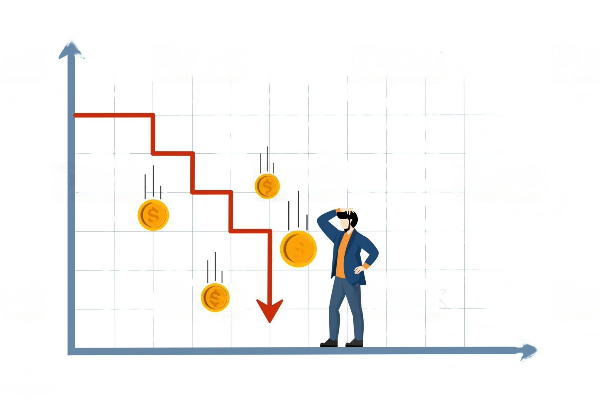In recent years, the global financial landscape has shifted dramatically as central banks raised interest rates to combat inflation. For individuals and investors, this new environment presents both challenges and opportunities. While borrowing has become more expensive, saving and income-generating assets now offer higher returns. This makes it an ideal time to explore passive income strategies that align with today’s high-interest rate climate. Passive income allows you to earn money with minimal active effort, and in this environment, smart positioning can help you maximize returns while managing risks.
Why High-Interest Rates Are Relevant for Passive Income
A high-interest rate environment changes the game for both savers and investors. Bank deposits, bonds, and money market instruments often yield better returns compared to periods of low interest. At the same time, real estate investors face rising mortgage costs, and stock market volatility increases as businesses adjust to higher borrowing expenses. For those seeking passive income, it’s important to rebalance portfolios and select strategies that thrive under current conditions.
1. High-Yield Savings Accounts and Certificates of Deposit (CDs)
One of the simplest passive income opportunities in a high-interest rate environment is taking advantage of high-yield savings accounts (HYSAs) and certificates of deposit (CDs). Many banks now offer annual percentage yields (APYs) well above traditional savings accounts. With interest rates elevated, even conservative investors can generate meaningful returns without taking on significant risk. While CDs lock in your money for a set term, they also guarantee predictable income. This is particularly attractive for those prioritizing capital preservation.
2. Government and Corporate Bonds
Bond markets become highly attractive when interest rates are elevated. Government treasury bonds, corporate bonds, and municipal bonds can provide reliable income streams through coupon payments. Unlike equities, bonds tend to be less volatile and offer predictable cash flows. In today’s environment, laddering bonds with different maturities can help investors balance risk and liquidity while enjoying higher yields than in previous years.
3. Dividend-Paying Stocks
While rising rates can pressure stock prices, dividend-paying stocks remain a cornerstone for long-term passive income. Companies with strong balance sheets, consistent earnings, and a history of increasing dividends often continue to reward shareholders even during economic uncertainty. Sectors such as utilities, consumer staples, and healthcare are considered resilient choices. Investors who reinvest dividends also benefit from compounding growth, making dividend stocks a versatile strategy.
4. Real Estate Investment Trusts (REITs)
Real estate has long been a favorite for passive income seekers, but high mortgage rates have cooled direct property investment. Instead, REITs offer an attractive alternative. These publicly traded companies own or finance income-producing real estate and pay out most of their profits as dividends. With options ranging from residential and commercial properties to data centers and healthcare facilities, REITs allow investors to diversify and capture rental income without the hassle of property management.
5. Peer-to-Peer (P2P) Lending Platforms
In a high-interest environment, peer-to-peer lending platforms can deliver higher yields than traditional savings products. These platforms connect borrowers with investors directly, cutting out intermediaries. While returns can be substantial, P2P lending carries default risks, so diversifying across multiple borrowers and using reputable platforms is essential. For those with a higher risk appetite, this can be a rewarding passive income stream.
6. Money Market Funds and Treasury Bills
Money market funds and short-term treasury bills are gaining popularity as safe, flexible passive income strategies. With yields rising alongside interest rates, these instruments offer liquidity and relatively low risk. Treasury bills, backed by the government, are particularly appealing to conservative investors looking for security along with competitive returns. For individuals who want their money accessible while earning interest, these options are excellent.
7. Rental Properties with Strategic Financing
Although high mortgage rates create challenges for real estate investors, rental properties can still generate strong passive income if financed strategically. Investors who already own properties at lower locked-in rates are in a favorable position, enjoying rising rental demand while costs remain stable. Additionally, using long-term fixed-rate financing or exploring markets with lower property prices can help new investors offset higher borrowing costs.
8. Digital Assets and Royalties
The digital economy continues to expand, offering unique passive income opportunities beyond traditional finance. Creating e-books, online courses, mobile apps, or stock photography can generate royalties for years after initial production. Similarly, investing in music royalties or intellectual property can provide recurring income streams. While these strategies require upfront effort, they can evolve into significant long-term passive earnings, especially as online consumption grows.
9. Annuities for Guaranteed Income
For investors seeking stability, fixed annuities become more attractive in a high-interest rate environment. Insurance companies typically offer better payout rates when interest rates are elevated, providing retirees or risk-averse individuals with predictable lifetime income. Although annuities come with limitations such as fees and lack of liquidity, they can serve as a reliable foundation for a passive income portfolio.
10. Building a Diversified Passive Income Portfolio
No single passive income strategy is risk-free. The key to success lies in diversification. Combining traditional instruments like bonds and savings accounts with growth-oriented options like dividend stocks, REITs, and digital royalties can create a balanced approach. Diversification helps mitigate risks from inflation, defaults, and market downturns while ensuring consistent income streams across different economic conditions.
Risk Management in High-Interest Rate Investing
While opportunities are abundant, investors must remain cautious. Inflation, economic slowdown, and interest rate fluctuations can all impact returns. Conducting due diligence, understanding liquidity needs, and aligning investments with personal financial goals are crucial. Using professional advice or financial planning tools can further minimize risks and ensure sustainable income growth.
Turning High Rates into High Rewards
A high-interest rate environment doesn’t have to be intimidating; it can actually create a golden era for passive income strategies. From secure options like savings accounts and bonds to more dynamic opportunities in real estate, dividends, and digital assets, investors have a wide range of choices. By embracing diversification, managing risks, and aligning with personal financial goals, anyone can build a sustainable stream of passive income. Ultimately, the key is to stay informed, remain flexible, and turn today’s high rates into long-term financial advantage.

